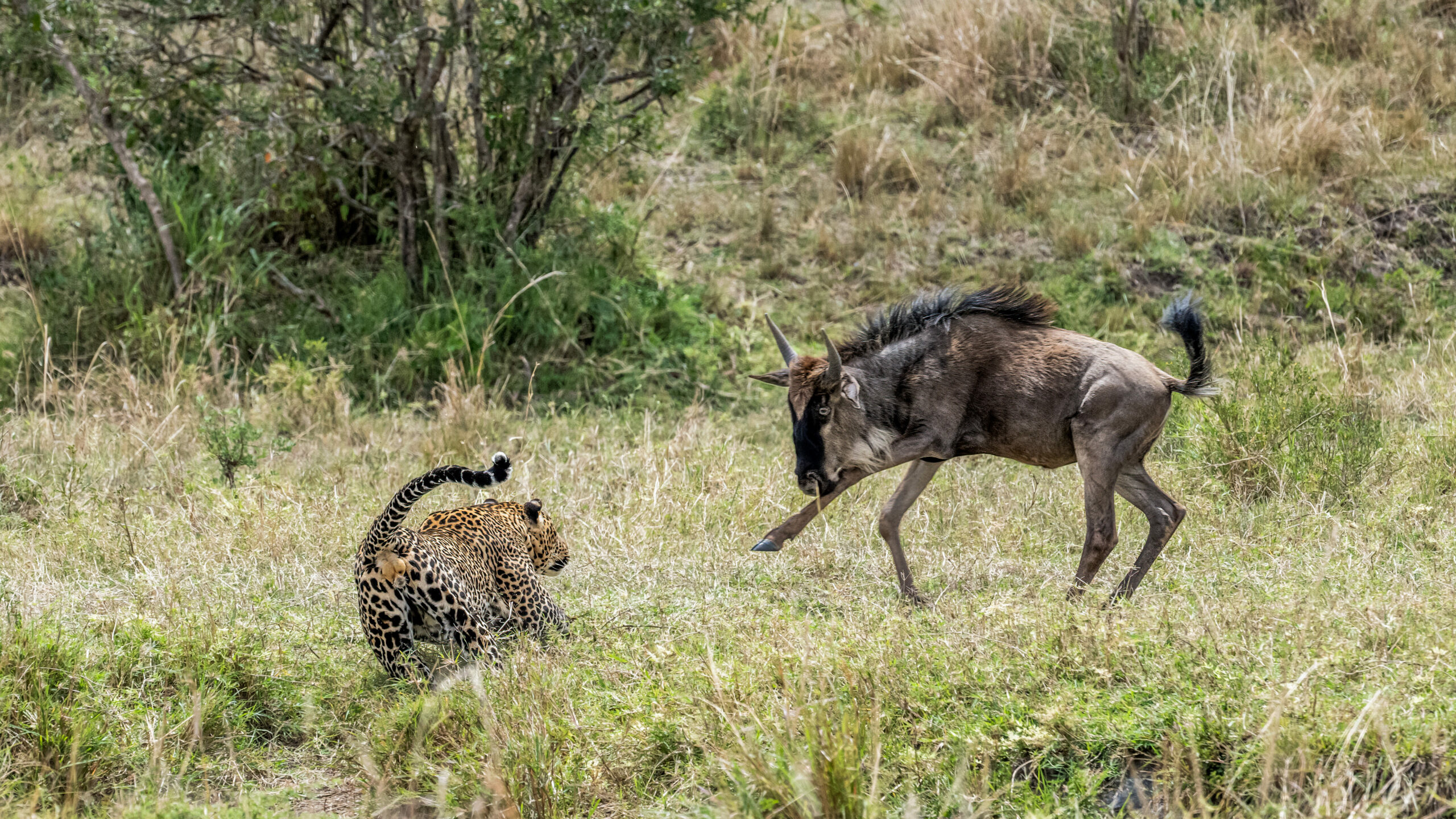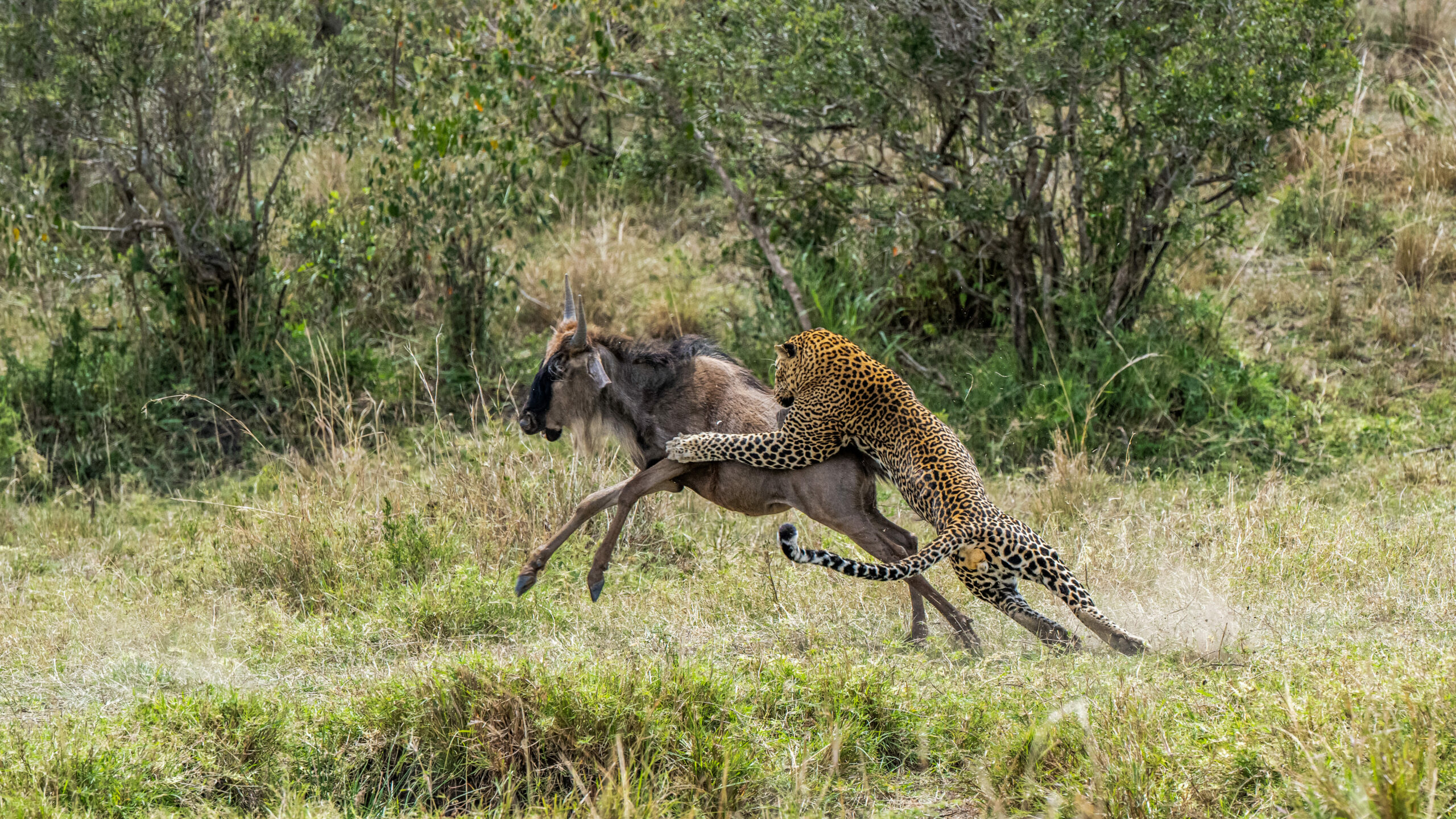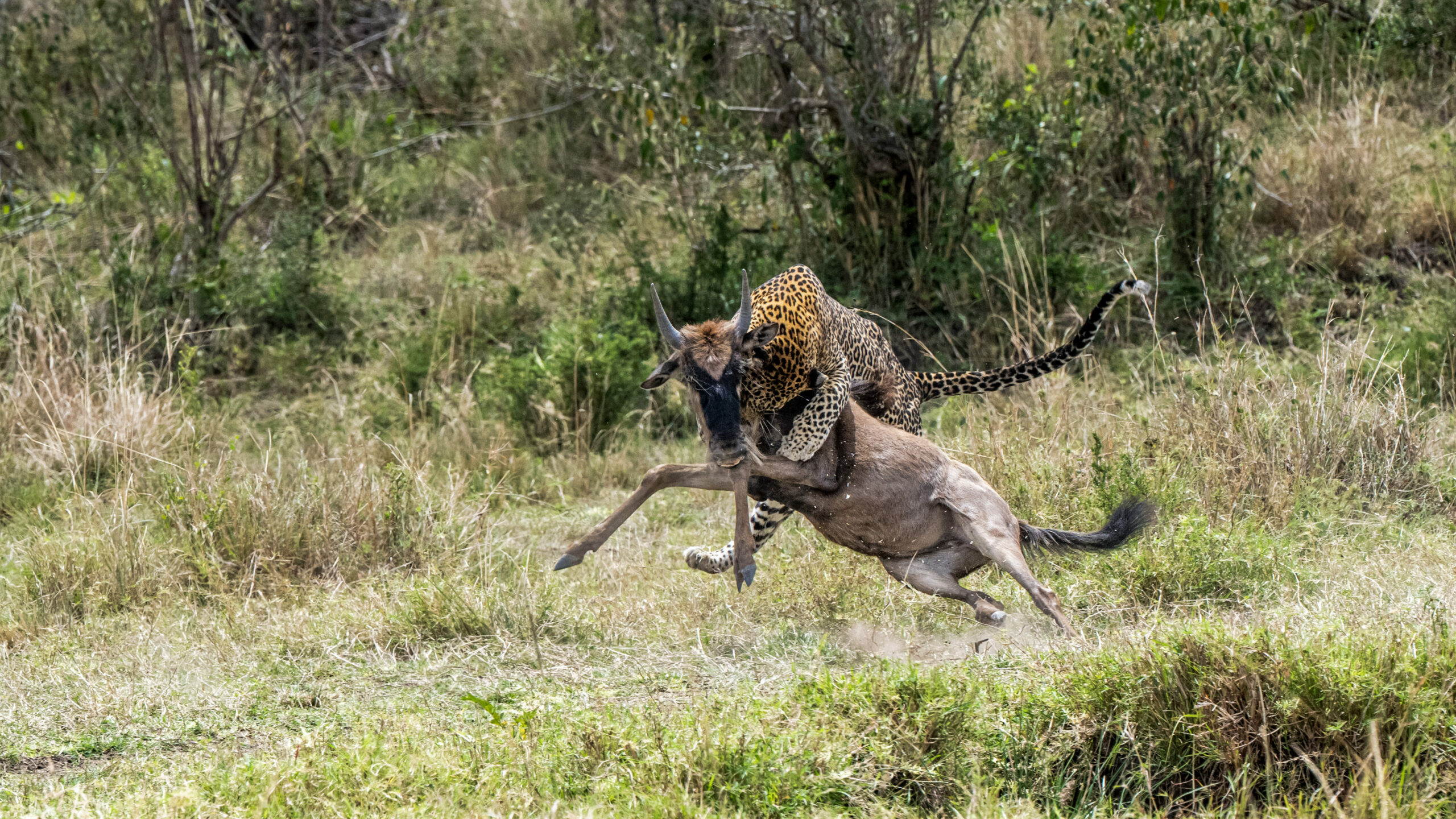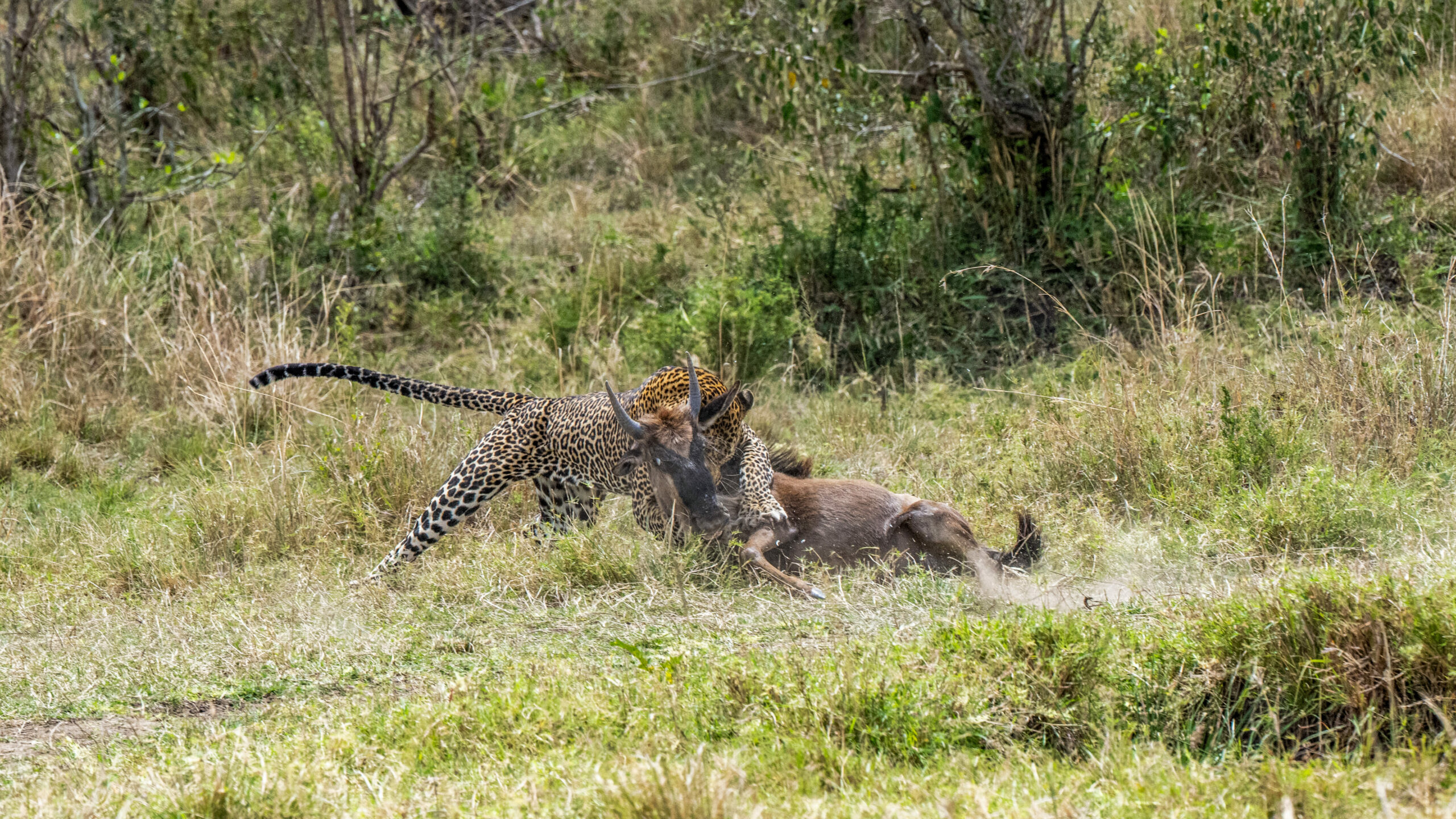A hungry leopard waits in ambush for three hours to take down a big wildebeest calf in less than five seconds.

Book a Trip to the Masai Mara
Ivan Glaser, (madaboutmara) waited in anticipation and shared the images he captured after his long wait with LatestSightings.com.
“We found this large male leopard named Shujaa hunting early one morning. We followed him for quite some time, but he couldn’t find anything. With a hungry belly, he eventually walked into a dry ditch to relax under a bush and went to sleep.”

Leopards rest and sleep during the day to escape the hot sun, often finding safe spots in trees, bushes, and riverbeds. They generally become active at night, hunting and exploring with their excellent night vision. After a night of hunting, they find a quiet place to sleep until the next evening, following a unique rhythm of rest and hunting. However, sometimes this pattern may change, and leopards can be seen hunting during the day.

My Masai guide and friend James from the Oltepesi Tented Safari Camp advised me that “the ditch the leopard had crawled into was along a popular route that wildebeest and other animals take when walking to a nearby river for water.” He felt that the leopard was just going to lie there and wait for something to come his way. He suggested that we just be patient and wait too.

“We positioned ourselves about 50 meters from the ditch and waited. After about three hours, as James predicted, we saw a herd of about 100 wildebeest running single file towards the ditch. The lead wildebeests ran past the ditch without noticing the leopard. Suddenly Shujaa appeared on the edge of the ditch, lying very low in the grass, watching the line of wildebeest run past.”
This Leopard waits 3 hours before getting to pounce on a wildebeest!

Wildebeests in the Masai form large herds and move together as a family. They travel long distances, seeking food and water while staying close to the rest of the herd. This unity provides protection against predators like lions, hyenas, and leopards. Unfortunately, they are not always safe, and sometimes the young and weak fall prey to predators.

Download the Latest Sightings App to share wildlife sightings in real time.
“James told me Shujaa was probably waiting for a young wildebeest, and when we saw one in the line, James told me to get ready. What happened next was so quick, I almost could not believe it. In less than 1 second, Shujaa confronted the startled young wildebeest, jumped on the wildebeest’s back, and brought it down.”

“It didn’t take long for Shujaa to suffocate the wildebeest. He then proceeded to drag it back into the ditch. The wildebeest was too large for even Shujaa to drag up a tree, so he rested before enjoying his meal on the ground, under the shade of a tree.”
